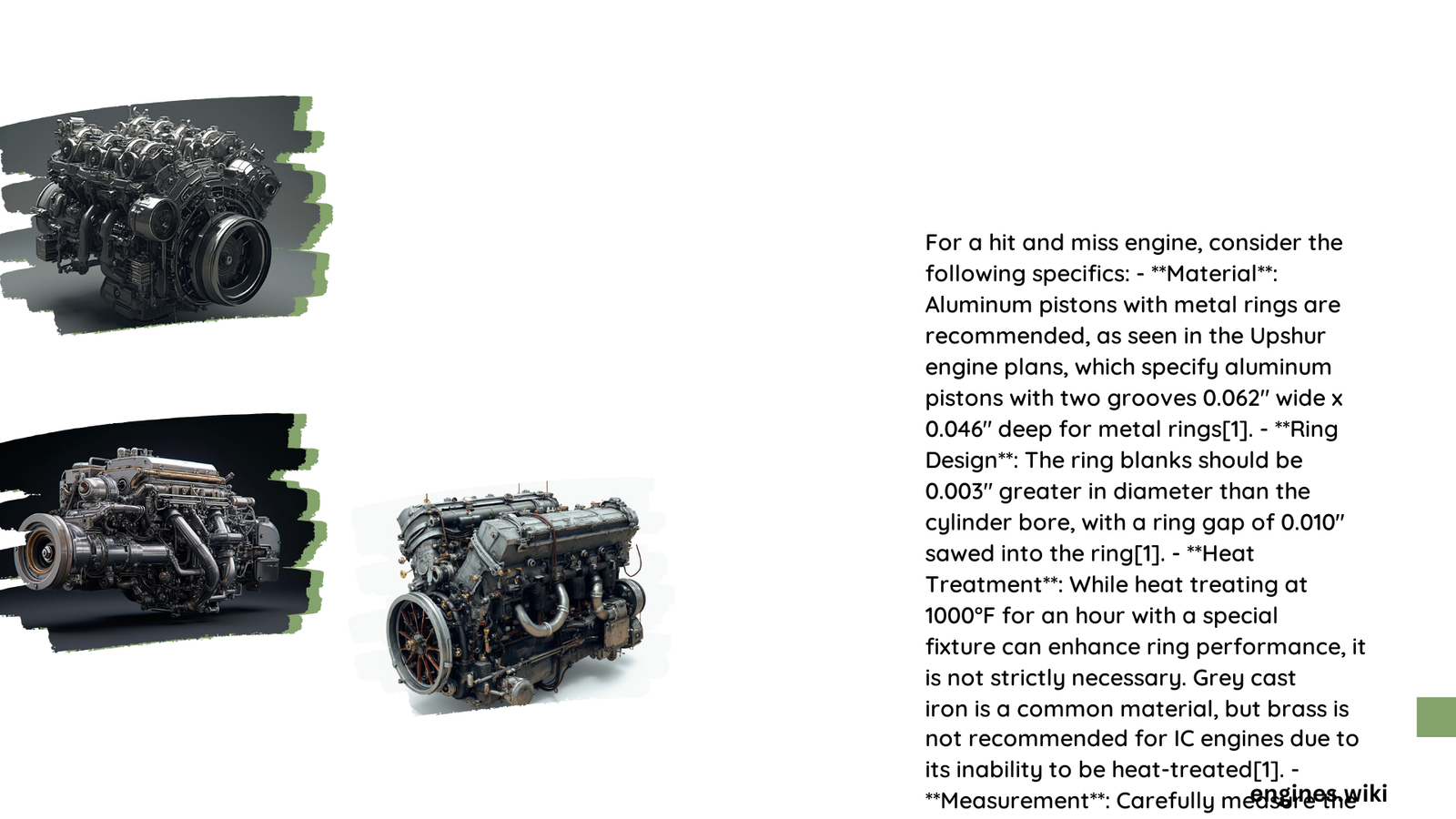Hit and miss engine piston rings represent a critical component in vintage engine design, serving as precision-engineered sealing mechanisms that maintain compression, regulate combustion efficiency, and ensure optimal mechanical performance. These specialized rings demand meticulous attention to dimensional tolerances, material selection, and installation techniques to guarantee reliable engine operation across various mechanical applications.
What Makes Piston Rings Critical in Hit and Miss Engines?
Piston rings are fundamental mechanical interfaces that create dynamic seals between the piston and cylinder wall. In hit and miss engines, these rings perform multiple crucial functions:
- Compression Sealing: Prevent combustion gases from escaping
- Lubrication Management: Control oil distribution across cylinder walls
- Heat Transfer: Facilitate thermal exchange between piston and cylinder
What Are the Precise Dimensional Requirements?
| Ring Characteristic | Typical Specification |
|---|---|
| Outer Diameter | 30-50 mm |
| Inner Diameter | 27.5-47.5 mm |
| Ring Thickness | 1.25-2.5 mm |
| Recommended Gap | 0.004 inches per inch of diameter |
How Do Material Choices Impact Performance?
Cast iron remains the preferred material for hit and miss engine piston rings due to several advantageous properties:
- Self-Lubricating Characteristics
- Contains free graphite content
- Reduces friction during engine operation
-
Provides superior wear resistance
-
Thermal Stability
- Maintains structural integrity under temperature variations
- Resists deformation during repeated heating/cooling cycles
What Installation Techniques Ensure Optimal Functionality?
Successful piston ring installation requires precision and careful methodology:
- Ring Squaring: Ensure perfect alignment within cylinder bore
- Gap Measurement: Utilize micrometers for accurate gap assessment
- Gradual Fitting: Use mandrels for controlled ring placement
- Temporary Stabilization: Apply minimal adhesive during initial positioning
How Can Mechanics Diagnose Potential Piston Ring Issues?
Potential indicators of piston ring problems include:
- Excessive blue smoke during engine operation
- Reduced compression performance
- Increased oil consumption
- Irregular engine idling
- Decreased overall engine efficiency
What Maintenance Strategies Extend Piston Ring Lifespan?
Recommended maintenance practices:
- Regular lubrication inspection
- Periodic ring gap measurement
- Careful cleaning of ring surfaces
- Monitoring cylinder wall condition
- Implementing preventative replacement schedules
Expert Recommendations

Professionals suggest:
– Always match ring specifications precisely to engine design
– Use specialized measurement tools
– Consider environmental operating conditions
– Prioritize quality over cost in material selection
Technical Considerations for Replacement
When replacing hit and miss engine piston rings:
– Verify exact dimensional requirements
– Inspect cylinder wall condition
– Select appropriate material grade
– Ensure proper installation techniques
Reference:
– Vintage Engine Mechanics Journal
– Antique Engine Restoration Guide
– Mechanical Engineering Technical Resources
